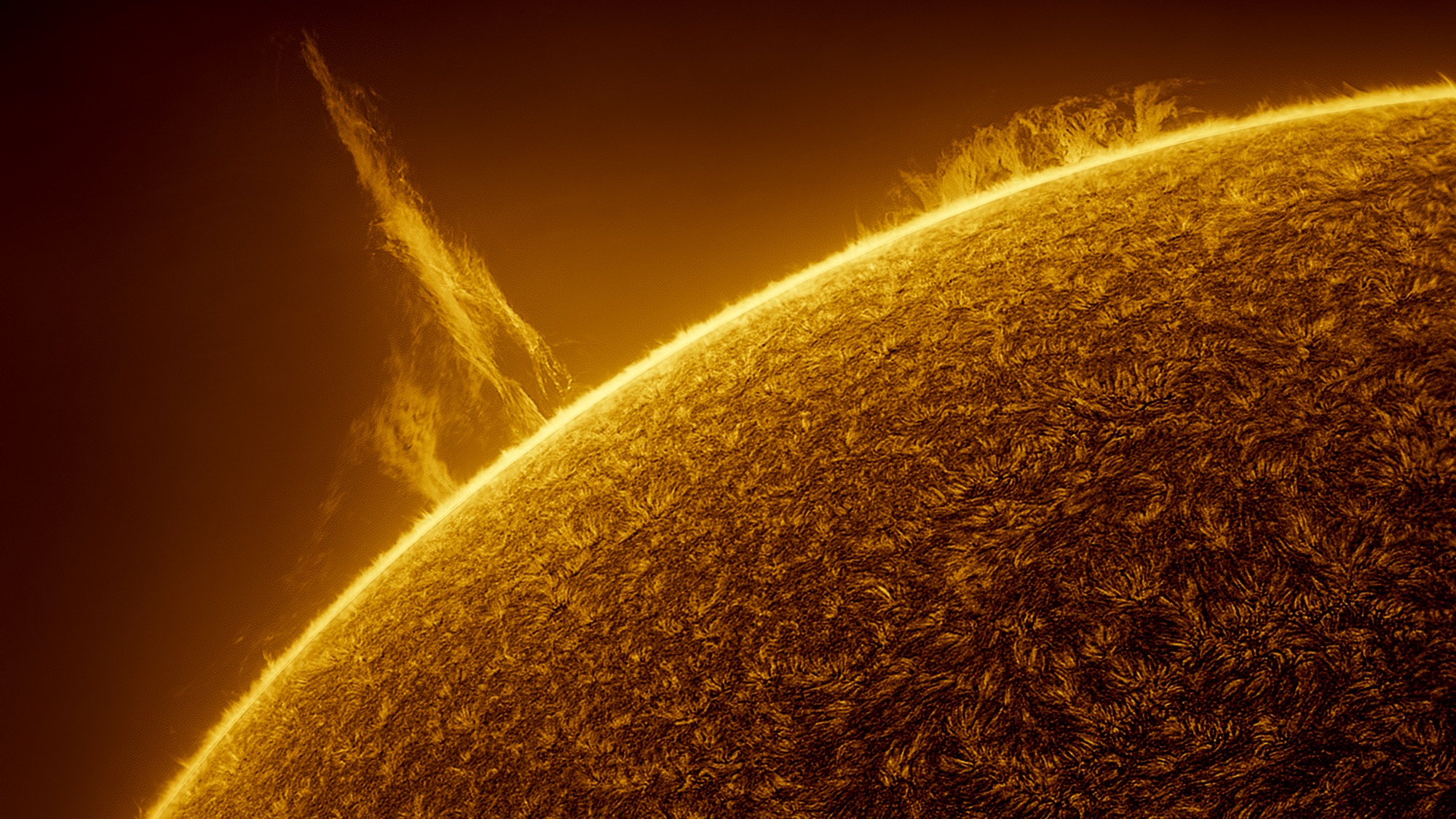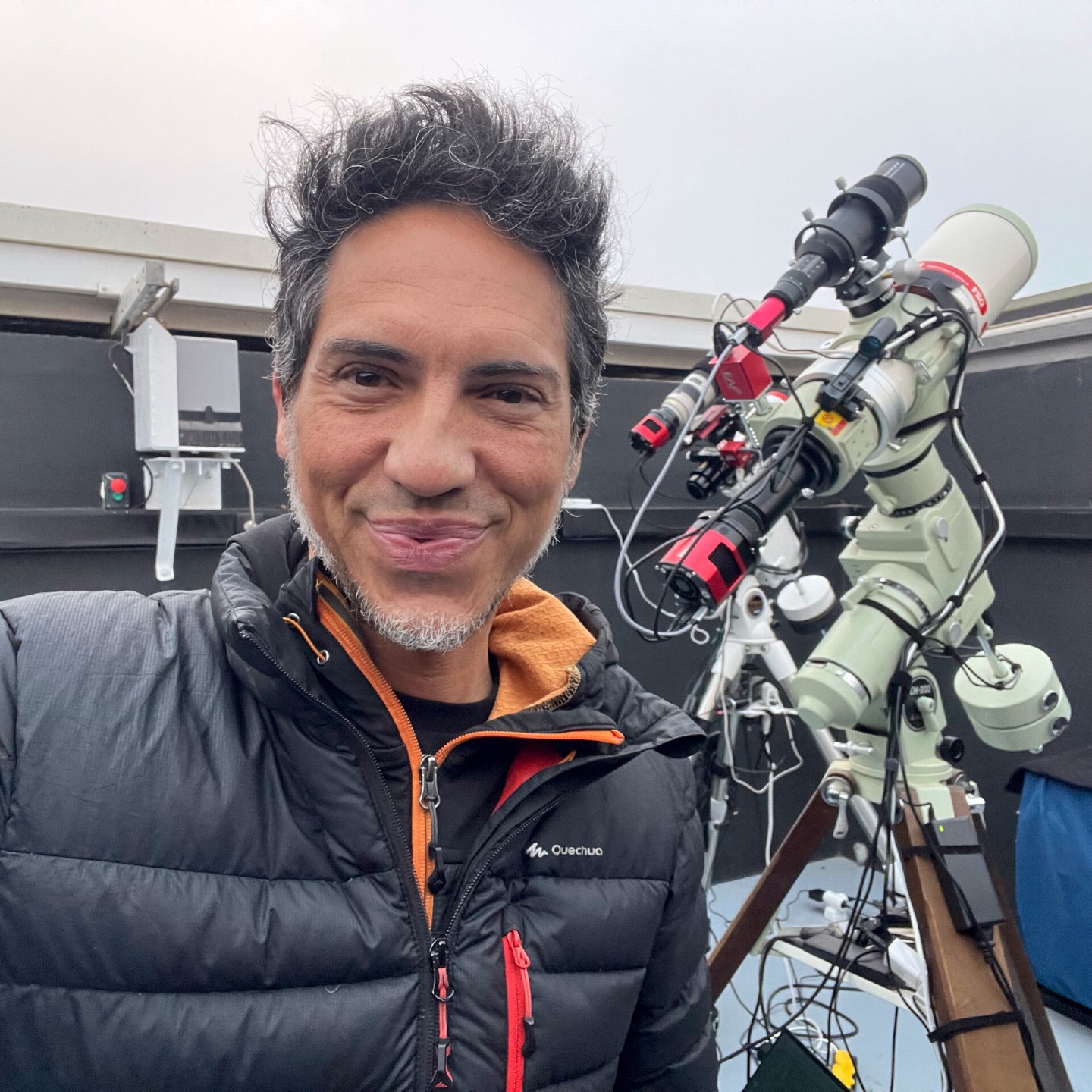Stunning solar tornado swings into space above the glowing sun (video)

Miguel Claro is a professional photographer, author and science communicator based in Lisbon, Portugal, who creates spectacular images of the night sky. As a European Southern Observatory Photo Ambassador and member of The World At Night and the official astrophotographer of the Dark Sky Alqueva Reserve, he specializes in astronomical "Skyscapes" that connect both Earth and the night sky.
Join Miguel here as he takes us through his new 4K video, "Solar Tornado Released into Space."
I noticed that the sun's atmosphere was featuring a gigantic prominence on April 20, so I prepared my solar telescope to start the photo session.
After about one hour of images, I noticed that this sun prominence was growing even more, which means that probably something bigger was about to happen.
I couldn’t imagine that one of my dreams of capturing a "solar tornado" in motion was about to turn into reality. These kinds of sun tornados are "controlled by magnetism," caused by solar magnetic fields that "twist in a furious spiral, dragging clouds of plasma around with them," according to SpaceWeather.com.
Related: Huge solar tornado as tall as 14 Earths hurls plasma cloud into space. Here's the video.
Read more: How to safely photograph a solar eclipse
Due to my position on a terrace, my view at that time of the year is blocked after 4:30 PM local. So I only had around one hour and 20 minutes to keep capturing as many images as I could, for a time-lapse sequence that could show the evolution of this giant plasma shape.
Breaking space news, the latest updates on rocket launches, skywatching events and more!
The final result is a 4K high-resolution solar movie comprising 290 images over the course of about two hours, between 1315 and 1507 GMT.
NASA's Solar Dynamics Observatory (SDO) imaged an animation on the same day, along with the LASCO instrument aboard the NASA/European Space Agency Solar and Heliospheric Observatory (SOHO).
The instrument aboard SOHO also saw a possible coronal mass ejection, which is a stream of charged particles from the sun. Sometimes these CMEs can hit Earth's magnetic field and cause colorful auroras.

Looking for a telescope? We recommend the Celestron Astro Fi 102 as the top pick in our best beginner's telescope guide.
Ready to go exploring in the night sky on your own? Check out our guides on the best telescopes and best binoculars. You can also get your imaging gear ready using the best cameras for astrophotography and best lenses for astrophotography.
To see more of Miguel Claro's work, please see his website or follow his stories on Instagram at www.instagram.com/miguel_claro.
Editor's Note: If you snap your own photos of the sky and would like to share them with Space.com's readers, send your photo(s), comments, and your name and location to spacephotos@space.com.
Miguel Claro is a professional photographer, author and science communicator based in Lisbon, Portugal, who creates spectacular images of the night sky. As a European Southern Observatory photo ambassador, a member of The World At Night and the official astrophotographer of the Dark Sky Alqueva Reserve, he specializes in astronomical skyscapes that connect Earth and the night sky.

